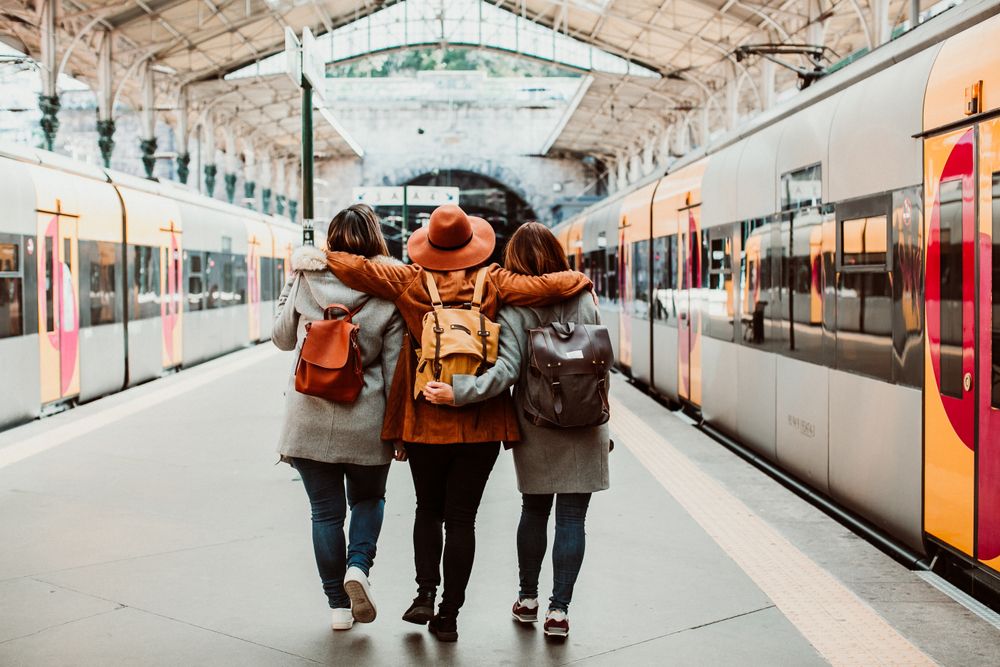Train travel has long been a mode of transport deeply embedded in the annals of history, intertwining the romanticism of scenic journeys with the practicality of connecting cities and countries. For those exploring cost-effective and pleasurable travel options, trains offer a compelling alternative to flying. While air travel is undeniably fast and convenient for long distances, trains can frequently emerge as the more affordable and enjoyable option, transforming the journey itself into a pivotal part of the adventure.
Cost Efficiency
One of the most compelling reasons to consider train travel over flying is cost efficiency. When planning a trip, ticket prices weigh heavily on decision-making. Train tickets can often be significantly cheaper than flights, particularly when you consider additional factors beyond just the base fare.
- No Hidden Fees: Train tickets are typically straightforward in pricing. Unlike budget airlines, which may advertise low prices but then add considerable surcharges for baggage, seat selection, and other services, train fares are usually inclusive. Passengers need not worry about paying extra for checked luggage or choosing a preferred seat.
- Advanced Booking Discounts: Many railway companies offer significant discounts for tickets purchased in advance. Early planners have an advantage here, with access to lower fares that inflate as the date of travel nears. In contrast, airfare can be volatile, and prices often escalate drastically as one approaches the departure date.
- Flexible Change Policies: Whereas airlines may charge exorbitant fees for flight changes or cancellations, trains often have more lenient policies. Passengers can typically modify their travel plans with little to no cost, affording peace of mind and flexibility.
The cost savings also compound when you consider the peripheral expenses associated with flying. Getting to and from airports often involves costly transfers or parking fees, both of which can be minimal or nonexistent with centrally-located railway stations. This positioning conveniently allows travelers to embark on their journeys without the additional costs and stress of navigating to remote airports.
Comfort and Convenience
Comfort is a crucial factor determining the overall travel experience, and here, trains frequently have the upper hand. Compared to the cramped quarters of an aircraft cabin, trains offer a more spacious environment, accommodating passengers in comfort.
- Ample Legroom: Train seats, designed for long journeys, provide considerably more legroom than those typically found in economy class flights. This extra space is beneficial for stretching or working comfortably with laptops and other devices.
- Freedom of Movement: On a train, you can freely move about, stroll to the dining car, or simply stretch your legs. This level of mobility is often restricted on flights due to turbulence or seatbelt sign restrictions.
- Dining Options: Trains can also provide more varied and enjoyable dining options. Many come equipped with dining cars or trolley services providing a selection of meals and beverages. This flexibility contrasts with the often minimal and packaged food options on flights, especially those operated by budget airlines.
Boarding a train is typically a less stressful process than the rigors of airport security and boarding gates. There’s no requirement for extensive security checks, and passengers are not required to arrive hours in advance, reducing travel anxiety and wasted waiting time.
Scenic Routes and the Journey Experience
Train travel often provides a unique opportunity to engage with the landscape and culture of the regions traversed. Roadways are fascinating in their own right, but railways are often routed through spectacular sceneries inaccessible by road or air, due to geographic or logistical constraints.
Viewing vistas unfolding through the large windows of a train carriage offers a cinematic experience, where natural beauty and historic landmarks become integral to the journey. Whether it’s traversing the Rocky Mountains, passing by the quaint villages of the European countryside, or witnessing the changing colors of the Australian outback, the train becomes a moving gallery intrinsically woven into the fabric of your trip.
Train journeys encourage travelers to slow down, inviting a more mindful appreciation of the world outside their window. This connection to the passing environment can make the journey itself a memorable component of the travel experience, rather than just a means to an end.
Environmental Impact
For eco-conscious travelers, trains offer a more sustainable alternative to flying. As the world collectively seeks to reduce carbon footprints, how we travel has become a key consideration. Trains generally emit less carbon dioxide per passenger mile than planes, a decisive factor for those mindful of their environmental impact.
Rail networks increasingly incorporate more efficient and cleaner technologies, such as electric locomotives powered by renewable sources, which further enhances their environmental credentials. While strides are being made to create greener air travel, train systems are frequently ahead in this regard, providing a current solution to more sustainable travel.
Wi-Fi and Connectivity
In our connected world, staying online during travel can be crucial for both leisure and business purposes. Many modern trains offer reliable Wi-Fi access, allowing passengers to remain productive or entertained throughout the journey. This continuous connectivity is often more stable than that offered on aircraft, where Wi-Fi can be intermittent or unavailable on certain routes.
Cultural and Social Experiences
Train travel often allows for greater social interaction. The communal setting provides a unique opportunity for meeting fellow travelers, sharing stories, and engaging in a more communal travel experience. Such interactions can enrich the journey, offering new friendships or insights into different cultures and backgrounds.
Some luxury and specialty trains elevate this experience by providing themed journeys, from the historic luxury of the Orient Express to the culinary-focused itineraries of trains traversing wine regions. Such experiences turn a simple journey into a themed exploration, providing sophisticated or fun social atmospheres and experiences unique to train travel.
Safety Considerations
Train travel is also seen as a safe mode of transport compared to flying. While both modes are statistically safe, trains are often involved in fewer incidents relative to airplanes. The absence of risks associated with high-altitude travel can also add to the comfort and peace of mind for some passengers who are apprehensive about flying.
The security procedures for trains, while thorough, are also less invasive compared to those at airports, lacking the stringent checks that can often feel cumbersome and invasive, further adding to traveler comfort.
Train travel offers a balance of cost efficiency, comfort, connectivity, and environmental consciousness. It invites travelers to become part of the landscapes they pass, offering a richer, more engaging travel experience. Whether making a short jaunt between neighboring cities or embarking on a long cross-country journey, trains provide a viable, and often preferable, alternative to flying. As we continue to seek ways to travel sustainably and affordably, railways stand ready to whisk travelers away on journeys that are as enriching as the destinations themselves.



